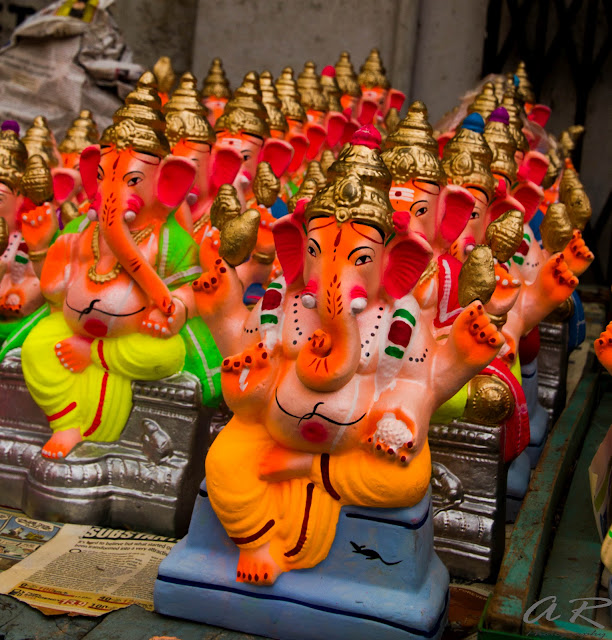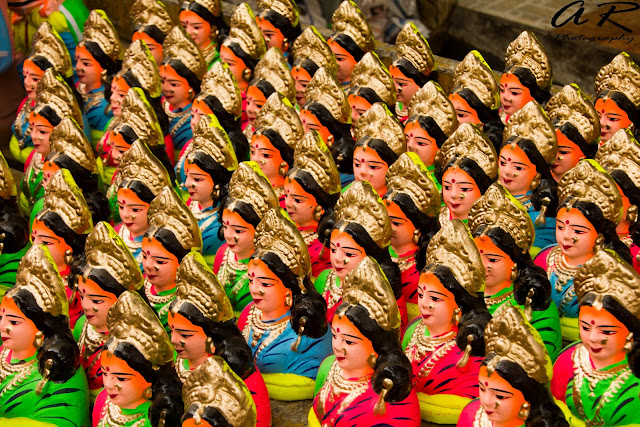Denali National Park is home to 6 million acres of wilderness, home to the tallest peak in the United States- Mt Denali. The park is accessible by one road which goes about 86 miles into the park and terminates at Wonder Lake. There are campgrounds along the road at various spots and can be reserved in advance. Private cars and trailers can only access upto mile 15 of the park. There is a ranger at mile 15, at the Savage River parking lot. After mile 15, the road turns to gravel and dirt. To go beyond this point you will have to take a shuttle bus or tour bus.
Shuttle bus is suited for those who are adventurous and want to get off and on to the bus anywhere. If you take the shuttle bus, keep in mind these buses are really slow, very dusty and very tiring. It takes 12 hours to go to Wonder Lake and be back at the visitor center. The views all along the drive are spectacular but after Polychrome Point/Eileson visitor center, they get old. If you are extremely lucky, you may see a reflection of Mt Denali in Wonder Lake. But, even this view needs a substantial walk in unmarked tundra, in potential bear territory. My recommendation would be to take the bus to Eileson Visitor Center if you are here for a day. If you want to go to Wonder Lake, do consider camping there as 12 hours in a bus with a potential 6am start is not a fun day. The green bus drivers are not wildlife spotters. Their main duty is to drive you out and back safely. That being said, they do stop for wildlife and are on the lookout for any wildlife.
Tour Bus: If you rather prefer to stay with your bus operator all day, then do take the Shuttle bus as the driver also narrates along the way. These are not hop off-hop on variety.
Trails: There are very few marked trails in Denali National Park. There is a trail near Savage River and one more at Eilsen Visitor Center. This is both exciting and disappointing for many. The best way to see Denali is to blaze your own trail and explore the tundra. Unfortunately this comes with its own risks as anywhere in Alaska you are in bear territory. Considering the statistics- one bear mauling in close to a century long history, it is reasonably safe to assume you will be safe by using your common sense. Make noise at all times and back away from any bear no matter how far it is.
We were walking on the dirt road just about 300 metres from a regular stop at the Polychrome Point when a green bus stopped and asked us to get in as there was a bear and two cubs just 300 yards behind us, just off the road. We didnt spot the bear and her cubs.
All in all, Denali National Park was a slight disappointment for me. Don't get me wrong, the views and the wildlife are great but the accessibility limits the awe factor of the park.
Here are some photos from the park - some of these have been shot with the Sigma 50-500 mm telephoto lens *without* a tripod. It is very hard to setup a tripod in a jiffy while inside the bus.
 |
| Moose, shot with 50-500 mm Sigma lens, before the 15 mile mark. |
 |
| Moose grazing, shot with 50-500mm Sigma lens |
 |
| Savage River trail, accessible by car. |
Below is a shot of Mt Denali, only 40 percent of hikers summit this beast. Worse still, only one of three visitors are able to see Mt Denali from the National Park. We were lucky for about half a day as it disappeared by noon. Here you can see a jet stream blowing at the summit.
About the photograph:
313 mm, f/18, 1/640
 |
| Mt Denali, from the Sanctuary River area. |
Just a little after the first stop, we ran into our first bear sighting. This blonde grizzly was in deep slumber and looked up just in time. He did not stay awake for too long.
About the photograph:
266mm, f/14, 1/250. I had to use the guard rails in the window of the shuttle bus to stabilize this shot.
 |
| Sleepy blond grizzly |
We saw a total of three grizzlies on day 1, none too close or too active. This grizzly below was almost a mile away, in a deep blissful state, taking an afternoon nap! It seemed like he had had too much beer and had fallen off by the wayside in his drunken stupor!
Credit to the lens- this picture was shot at 500mm zoom without a tripod or shutter remote.
500mm, f/8.0, 1/160
 |
| Drunk grizzly, shot with Sigma 50-500mm |
Here is a digitally zoomed in version of the same photo- notice his claws!! If you get on the wrong side of one of these bad boys, you are sure to be on the express checkout lane!
 |
| Digitally zoomed in, notice his claws! |
Mt Denali, before we take on Polychrome Pass. Polychrome Pass gets its name from the color or the rocks/scree at this point. There are steep cliffs on one side and makes for a fun drive. Look out for bald eagles at this location as the eagles like to nest in the rock cliffs.
 |
| Mt Denali late in the morning, lenticular clouds forming at the summit. |
Toklat River is an uneventful stop. Do checkout the USGS hut at this stop. Also your last chance to buy bug spray in case you forgot to pack bug spray.
Further down the road, Eilsen Visitor Center makes for a good lunch break. Take in the view of the vast tundras and possibly Mt Denali if you are lucky are. There are pedestal binocular that you can use to look at the slopes of Denali and the neighboring peaks.
 |
| Tundras, from the Eilsen Visitor Center |
One last look at Mt Denali from Eilsen Visitor Center. The cloud cover was covering almost half the mountain now.
 |
| Mt Denali from Eilsen. |
You may or may not see wolves, bears, caribou, moose etc etc but you will definitely run into a lot of ground squirrels. These little guys are playful. I tried hard and long to get a shot of the ground squirrel standing up in grassland but they are just too quick. If you do set up your tripod and wait, you will be rewarded. Unfortunately, my shuttle bus was leaving and this is the best I could do. These little guys run every few feet and then stand up to look ahead, almost as if they need directions .
 |
| Artic Ground Squirrel |
 |
| Moose, with reflection |
And... finally!! After departing the visitor center at 6:15 am, we were at Wonder Lake at 12:30pm. A long and dusty journey to this place. By the time we arrived here, Mt Denali was almost completely covered. I would have camped a night or two just to get a chance at that reflection picture but that shot is probably better taken from the far end of this lake. You need to be on the Kantishna Experience tour bus to get there.
 |
| Wonder Lake, looking away from Mt Denali |
I have no idea what species these little ones belong to, probably the geese, swan or duck family.
 |
| Little birdies, shot from a moving bus |
A visit to Denali is incomplete without spotting the Dall Sheep. Look at all the peaks for small cluster of white specs and you would have spotted Dall Sheep. They seldom come down for fear of being attacked by wolves. They are good climbers as visible in the photo below.
 |
| Dall Sheep |
 |
| Caribou Crossing |
We were lucky to have a Caribou cross the dirt road and walk right by the bus.
Day 2- We had tickets to the Eilsen Visitor Center but did not make it past Polychrome Pass. We were debating if it made sense to make this arduous journey into the park again and delayed our start. Just a few minutes past the Savage River area, I was able to spot a large blonde bear foraging for grass. This grizzly was quite the showman. We observed it for almost 25 minutes and he was active all along. This was one place where, if I or someone else on the bus hadnt spotted the animal, we would have driven right past it. They really need spotters on all buses.
 |
| Blonde Grizzly |
The blonde grizzly in Denali NP is smaller in size to the brown grizzly. The blonde variety mainly forage on berries. They eat almost no salmon as the rivers here are fed by melting glaciers and have no fish in them. Hence they are smaller in size, but I assume they pack the same punch in them. All of these pictures below were shot at 500mm.
 |
| Blonde Grizzly foraging for food |
 |
| Finally, as the bus started, he looked right at us |
He didnt seem to be bothered by the big green bus and quickly went back to looking for edible roots.
 |
| Denali NP, Blonde Grizzly |
We did not spot too many caribou close to the road. Apparently, these animals like to stay in the snow patches because the flies do not bother them there. This caribou was startled by the noise some passengers made in the bus. As a courtesy to your fellow passengers, please use your judgement while choosing to speak loudly. This could have been a beautiful viewing experience, cut short by senseless human noise.
 |
| Caribou running away from the roadside. |
Thus ended my two day Denali NP visit. I may visit again but I will definitely choose to stay over in Kantishna or camp at Wonder Lake.
I would love to hear from you, leave your comments below.



































































